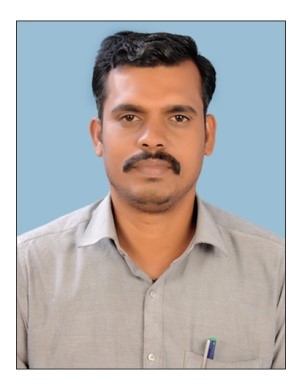Department of Electronics and Communication Engineering
Electronics and Communication Engineering, is that discipline where non-linear and linear electrical components such as electron tubes, and semiconductor devices, especially transistors, diodes and integrated circuits, are utilised to design electronic circuits, devices and systems.
Department of ECE was established in 2009 with an intake 60 and increased to 120 in 2010.
The Department of ECE has state-of the- art laboratories in the areas of
- Advanced Communication
- Embedded systems
- DSP
- Microwave and Optical Communication
- VLSI system design.
The department of ECE nurtures the students to
- Apply knowledge of mathematics, science and engineering to understand electronics and communication engineering.
- Design and conduct experiments to analyse and interpret data gathered
- Develop leadership in multi-disciplinary teams.
- Understand ethical and professional responsibility
Faculty
The department has well-qualified and experienced faculty who are specialists in the areas of Image Processing ,Embedded systems,Digital signal processing, Microwave ,Optical Communication and VLSI system design.
Laboratories
At AVNIET, we have ultra modern labs.
PEOs
PEO 1 : Graduates will be able to synthesize mathematics, science, engineering fundamentals; laboratory and work-based experience to formulate and solve problems related to the Electronics and Communication Engineering and shall develop proficiency in computer based engineering and the use of computational tools.
PEO 2: Graduates will be prepared to communicate and work team-based on the multi disciplinary projects practicing the ethics of their profession with a great sense of social responsibility.
PEO 3: Graduates will recognize the importance of lifelong learning to shine as experts either as entrepreneurs or as employees and thereby broadening their professional knowledge.
PSOs
PSO 1: An ability to apply the concepts of Electronics, Communication, Signal processing, VLSI, Control Systems etc, in the design and implementation of application oriented engineering systems.
PSO 2: An ability to solve complex Electronics and communication engineering problems, using latest hardware and software tools, along with analytical and managerial skills to arrive appropriate solutions, either independently or in team.
POs
PO1 : Engineering knowledge – Engineering knowledge: Apply the knowledge of mathematics, science, engineering fundamentals, and an engineering specialization to the solution of complex engineering problems.
PO2: Problem analysis – Identify, formulate, review research literature, and analyze complex engineering problems reaching substantiated conclusions using first principles of mathematics, natural sciences, and engineering sciences.
PO 3: Design/ development of solutions – Design solutions for complex engineering problems and design system components or processes that meet the specified needs with appropriate consideration for the public health and safety, and the cultural, societal, and environmental considerations.
PO 4: Conduct investigations of complex problems – Use research-based knowledge and research methods including design of experiments, analysis and interpretation of data, and synthesis of the information to provide valid conclusions.
PO 5 : Modern tool usage – Modern tool usage: Create, select, and apply appropriate techniques, resources, and modern engineering and IT tools including prediction and modeling to complex engineering activities with an understanding of the limitations.
PO 6 : The engineer and society – Apply reasoning informed by the contextual knowledge to assess societal, health, safety, legal and cultural issues and the consequent responsibilities relevant to the professional engineering practice.
PO 7 : Environment and sustainability – Understand the impact of the professional engineering solutions in societal and environmental contexts, and demonstrate the knowledge of, and need for sustainable development.
PO 8 : Ethics – Apply ethical principles and commit to professional ethics and responsibilities and norms of the engineering practice.
PO 9 : Individual and team work – Individual and team work: Function effectively as an individual, and as a member or leader in diverse teams, and in multidisciplinary settings.
PO 10 : Communication – Communicate effectively on complex engineering activities with the engineering community and with society at large, such as, being able to comprehend and write effective reports and design documentation, make effective presentations, and give and receive clear instructions.
PO 11 : Project management and finance – Demonstrate knowledge and understanding of the engineering and management principles and apply these to one’s own work, as a member and leader in a team, to manage projects and in multidisciplinary environments.
PO 12 : Life-long learning – Life-long learning: Recognize the need for, and have the preparation and ability to engage in independent and life-long learning in the broadest context of technological change.
Faculty
Vision
To become a centre of excellence in the field of Electronics and Communication Engineering, keeping in view of advanced developments that produces Innovative, Skillful, Socially responsible professionals who can contribute significantly to Industry and Research.
Mission
M1: To provide the skilled manpower with state-of-art knowledge in Electronics and Communication Engineering.
M2: To provide the Professionals to the nation with innovations and ideas in the area of advanced Electronics and Communication Technologies through research and graduate studies.
M3: To provide the professionals for participating in the design and development process of industries and society.
Courses Offered
B.Tech (ECE)
Intake – 120
M.Tech (VLSI & ES)
Intake – 24
Dr. N. Suresh
M.E, Ph.D [ECE]
9943778729
ecehod@avniet.ac.in
Dr.N.Suresh, Professor & Head, Department of ECE has completed B.E, M.E, Ph.D in Electronics & Communication Engineering. He is having more than 15 years of experience. He worked as a HOD in various Engineering Colleges from 2015 to till date and received Prestigious Awards from many Educational Institutions. He is a reviewer for various National, International Journals and Conferences and also guided more than 30 B.Tech & M.Tech Projects. He has published more than 35 papers in reputed UGC, SCI and Scopus Indexed International Journals. He is a life member of various Technical Professional Bodies including IEEE, IETE & ISTE. He delivered numerous Technical Speeches at various Workshops and FDPs as a Resource Person & Keynote Speaker.
He has organized various Workshops, Seminars, Webinars, FDPs & Conferences sponsored by MeitY, HRD Division, Ministry of ICT, Govt. of India. He acted as a Chief Superintendent for JNTUH Examinations. He also acted as a Judge for Smart India Hackathon 2018, 2019; Project Expo and International Conferences in various Engineering Colleges all over India. He is committed not only in using his knowledge and skills in the class room but also more importantly to be an integral part of student development towards Outcome Based Education. He is a highly motivated, enthusiastic and dedicated faculty towards nurturing the student’s growth.
| Activity Calendar-A.Y:2022-23 |
Activities / Events
Workshops/STTPs
2018-19
2017-18
2016-17
Industrial Interaction
FDP’s
Paper Publications
ECE Laboratories
ECE Library
ECE Calender
R&D Activities
Products Developed
Rope climbing robot:
Robots are mostly used to solve the problem/ tasks which are complicated and risk to the humans. The particular projects rope climbing robot is also a similar kind of robot which over takes the risk work like fire extinguisher. The structure of this robot is designed in such a way that it can able to climb ropes. So that the movement for the robot from one floor to the other will be easy. The fire sensor in this robot will sense the falme and take action according.
Spider Robot :
The spiders, in comparison with the majority of other animals, it has the ability to access to that kind of environment where other animals or even the humans can’t .those attributes of the spiders are taken into this projects in order to design and develop a quadruped spider robot in conditions to move in all kind of directions and perform such moments like ascend or descend. The paper is presented the dynamics and kinematics model with the purpose of understand how , mathematically , a quadruped animals and a spider walk . In this case we studied the movement of a real spider, so we can define a suitable bio-metric model for our robot. Similarly, the motion simulation was implemented and the results are shown.
Activities
CAYm1 (2017-18)
CAYm2 (2016-17)
CAYm3 (2015-16)
ECE Teaching Methodologies
ECE Committies
DAC committee members 2018-19
PAC committee members 2018-19
AAC committee members 2018-19
SIC committee members 2018-19
ECE Other Info
Professional Societies
1. IETE
2. AVNIET Bits And Chips and Union of Students (ABACUS)
News Letters
Placements
Internships
Roll of Honors

